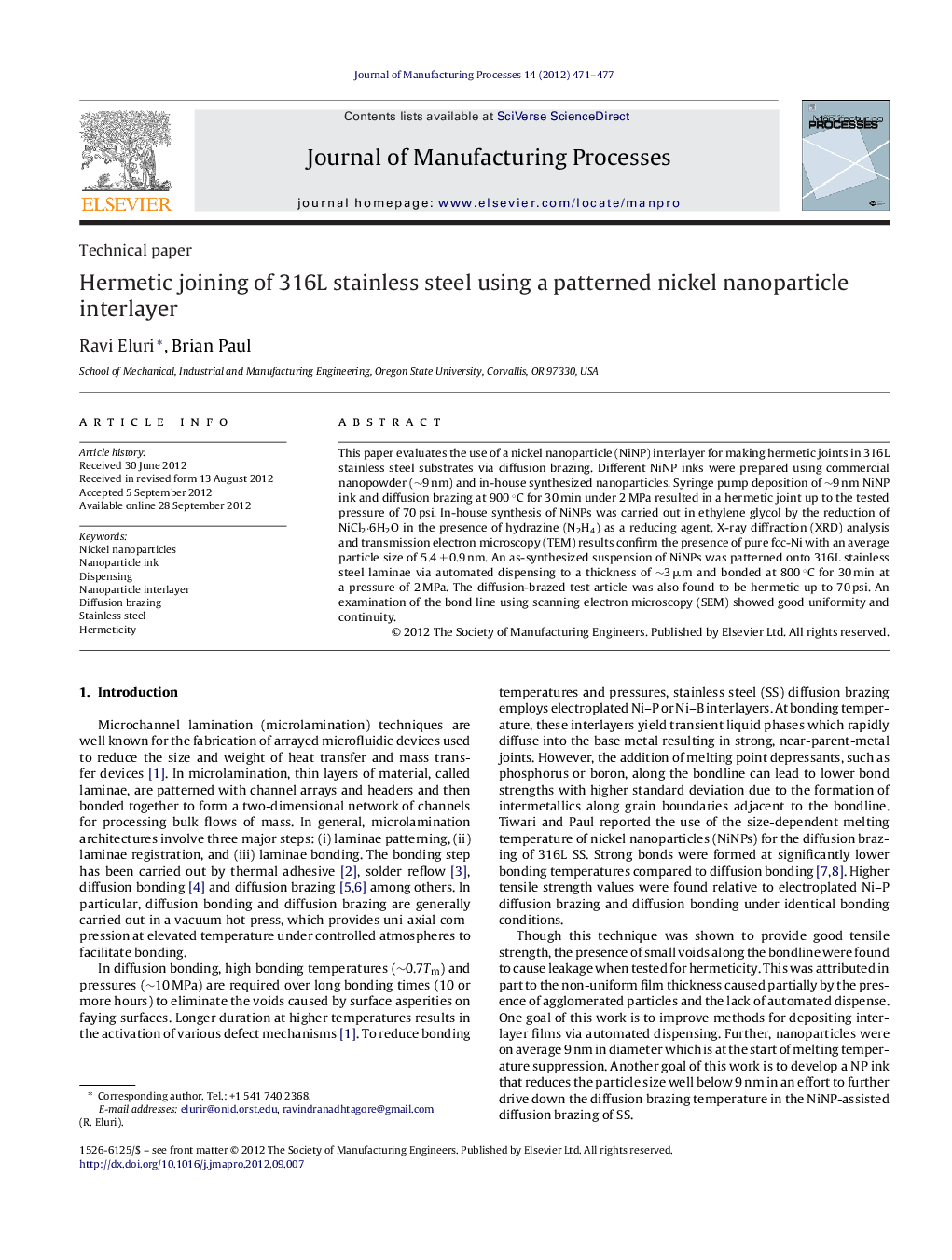| Article ID | Journal | Published Year | Pages | File Type |
|---|---|---|---|---|
| 1697147 | Journal of Manufacturing Processes | 2012 | 7 Pages |
This paper evaluates the use of a nickel nanoparticle (NiNP) interlayer for making hermetic joints in 316L stainless steel substrates via diffusion brazing. Different NiNP inks were prepared using commercial nanopowder (∼9 nm) and in-house synthesized nanoparticles. Syringe pump deposition of ∼9 nm NiNP ink and diffusion brazing at 900 °C for 30 min under 2 MPa resulted in a hermetic joint up to the tested pressure of 70 psi. In-house synthesis of NiNPs was carried out in ethylene glycol by the reduction of NiCl2·6H2O in the presence of hydrazine (N2H4) as a reducing agent. X-ray diffraction (XRD) analysis and transmission electron microscopy (TEM) results confirm the presence of pure fcc-Ni with an average particle size of 5.4 ± 0.9 nm. An as-synthesized suspension of NiNPs was patterned onto 316L stainless steel laminae via automated dispensing to a thickness of ∼3 μm and bonded at 800 °C for 30 min at a pressure of 2 MPa. The diffusion-brazed test article was also found to be hermetic up to 70 psi. An examination of the bond line using scanning electron microscopy (SEM) showed good uniformity and continuity.
► Nickel nanoparticle ink was successfully prepared from ∼9 nm dry powder. ► A deposition method using needle dispensing was demonstrated for NiNP ink. ► Stable NiNP (∼5.4 nm) ink was prepared in-house via modified polyol process. ► A ∼2 μm layer of NiNP was deposited via automated dispenser. ► In-house prepared ink resulted in lowering of brazing temperature by 100 °C.
